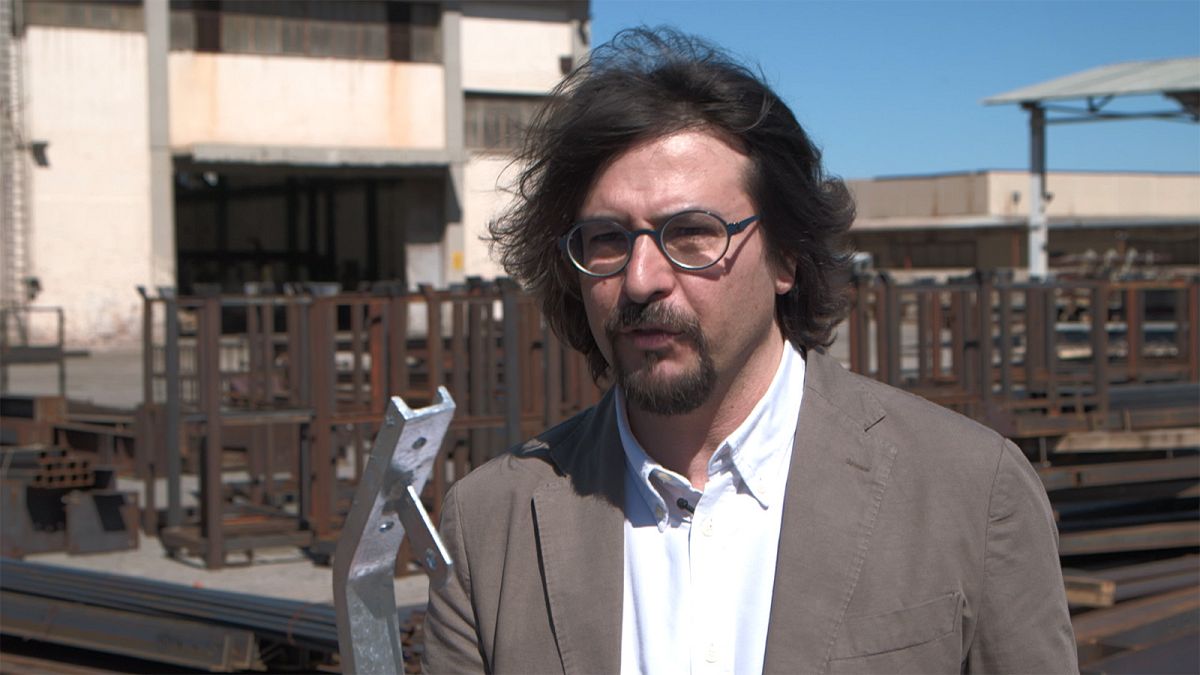Galvanized metal is all around us - in buildings, cars, fences and household devices like washing machines. It is more sustainable than normal steel and cheaper to produce than stainless steel. Find out more about it in this web-exclusive interview.
Galvanized steel is a material you come into contact with constantly in day-to-day life. It's used in steel frames for buildings, vehicles, gates and fences, and a number of household devices like washing machines.
Galvanization is a way of making steel and iron more sustainable. The process involves taking pieces of steel and dipping them in hydrochloric acid in a process called "pickling", then dipping that into a bath of molten zinc. This forms a protective coating of zinc making metal less prone to corrosion - avoiding the need to repair or replace it in the long run - meaning it's a way of making a commonly used material last a lot longer.
Euronews spoke to expert Alberto Di Cristafolo from Tecnozinco, a steel processing firm. He is working on an EU-funded project to make galvanization a more environmentally friendly process. The project, called ReWaCEM, has a team of scientists developing new technology for this. Galvanization requires a huge amount of hydrochloric acid which has to be disposed of at the end of the process. ReWaCEM is working on technology that cleans the acid, meaning it can be reused. You can learn more about this in our latest feature of Futuris.
In this web-exclusive interview, Alberto explains the galvanization process and why it's important for the sustainability of such a widely used material:
"Corrosion degrades the steel substrate. The rust, or iron oxide removes material from the piece of iron, destroying it long-term. Hot-dip galvanizing allows us to obtain an alloy which protects the product and extends its useful life."
When the iron or steel is dipped in molten zinc, the protective coat that forms can prevent rusting:
"The alloy can have a chemical effect of protection as a sacrificial anode, ensuring that it is the zinc that oxidizes first: it is a barrier effect, separating the oxidizing element of the air from the iron substrate. In this way the useful life of the product is extended, and when the coating degrades we still have the product intact."




